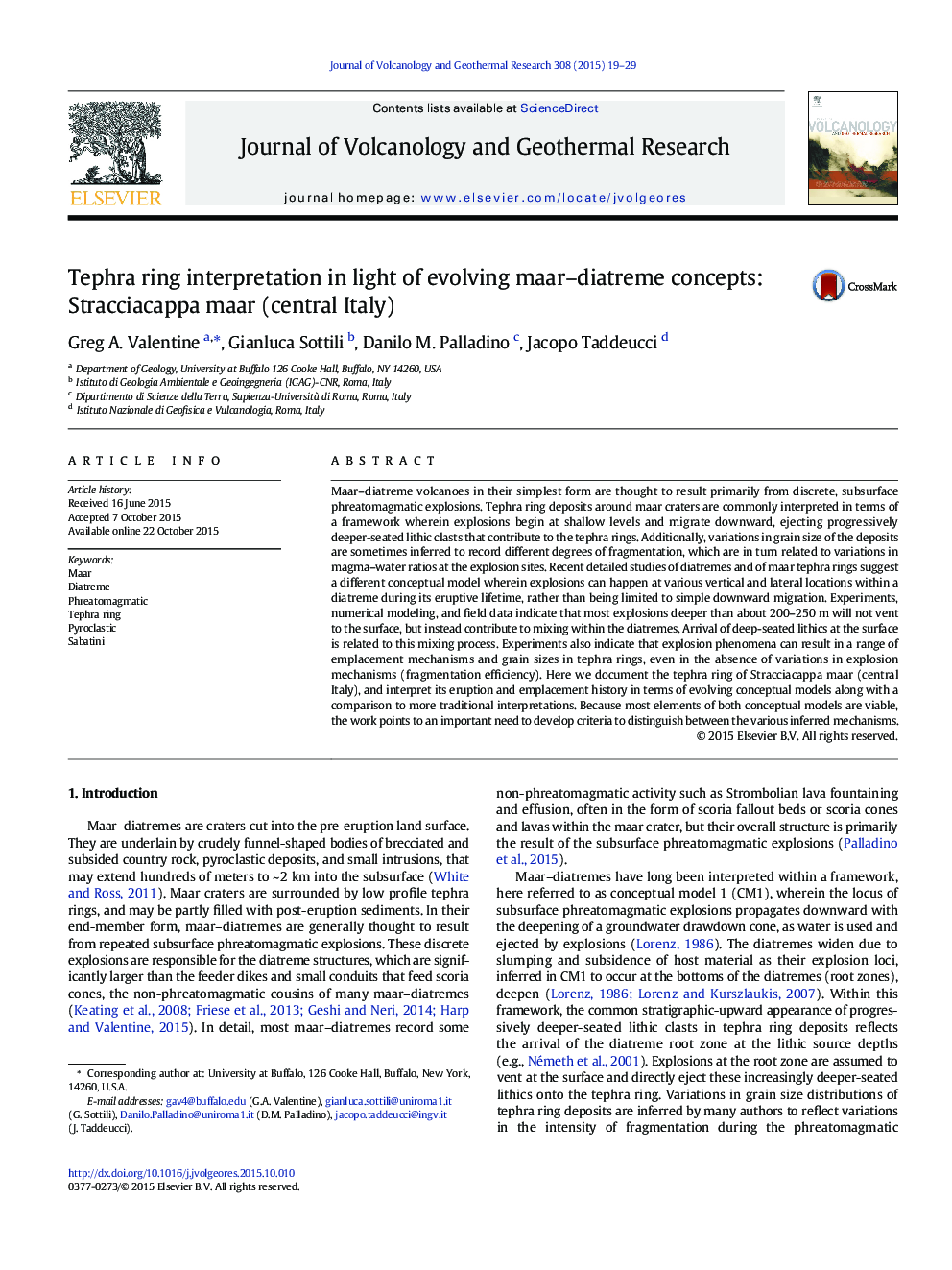| Article ID | Journal | Published Year | Pages | File Type |
|---|---|---|---|---|
| 6439603 | Journal of Volcanology and Geothermal Research | 2015 | 11 Pages |
Abstract
Maar-diatreme volcanoes in their simplest form are thought to result primarily from discrete, subsurface phreatomagmatic explosions. Tephra ring deposits around maar craters are commonly interpreted in terms of a framework wherein explosions begin at shallow levels and migrate downward, ejecting progressively deeper-seated lithic clasts that contribute to the tephra rings. Additionally, variations in grain size of the deposits are sometimes inferred to record different degrees of fragmentation, which are in turn related to variations in magma-water ratios at the explosion sites. Recent detailed studies of diatremes and of maar tephra rings suggest a different conceptual model wherein explosions can happen at various vertical and lateral locations within a diatreme during its eruptive lifetime, rather than being limited to simple downward migration. Experiments, numerical modeling, and field data indicate that most explosions deeper than about 200-250Â m will not vent to the surface, but instead contribute to mixing within the diatremes. Arrival of deep-seated lithics at the surface is related to this mixing process. Experiments also indicate that explosion phenomena can result in a range of emplacement mechanisms and grain sizes in tephra rings, even in the absence of variations in explosion mechanisms (fragmentation efficiency). Here we document the tephra ring of Stracciacappa maar (central Italy), and interpret its eruption and emplacement history in terms of evolving conceptual models along with a comparison to more traditional interpretations. Because most elements of both conceptual models are viable, the work points to an important need to develop criteria to distinguish between the various inferred mechanisms.
Related Topics
Physical Sciences and Engineering
Earth and Planetary Sciences
Geochemistry and Petrology
Authors
Greg A. Valentine, Gianluca Sottili, Danilo M. Palladino, Jacopo Taddeucci,
